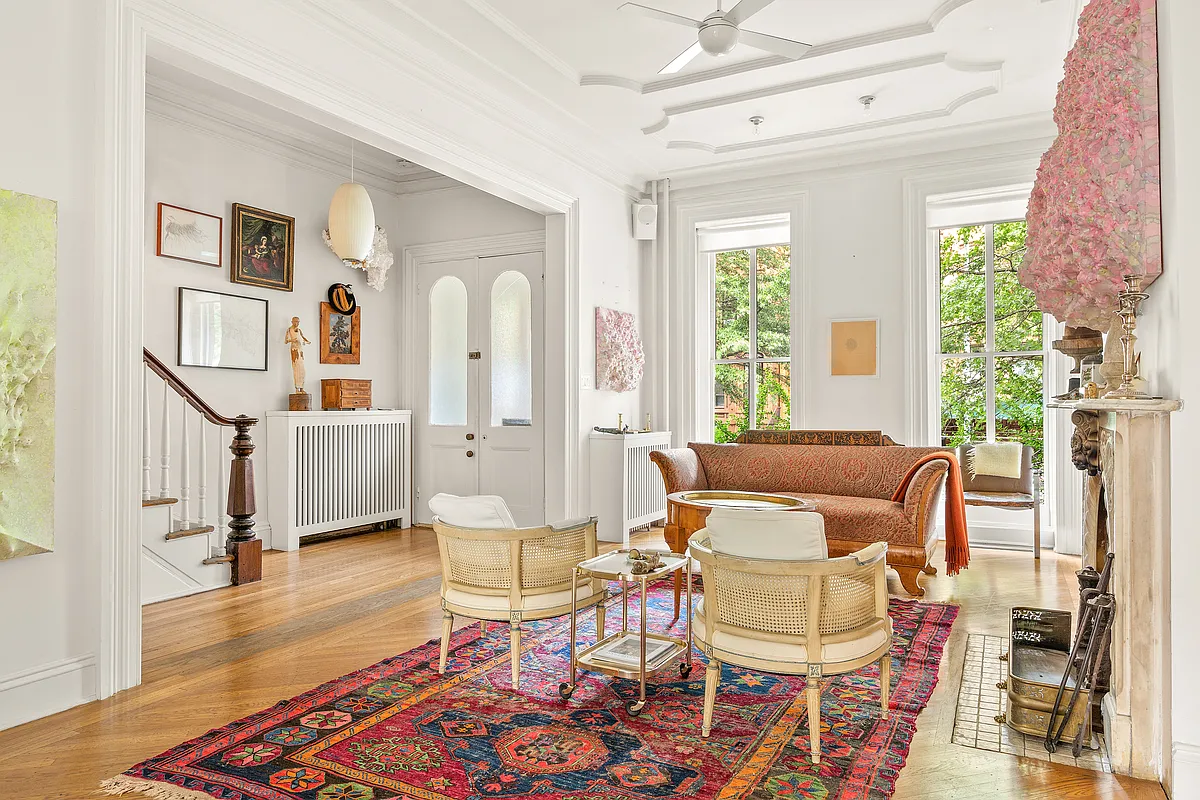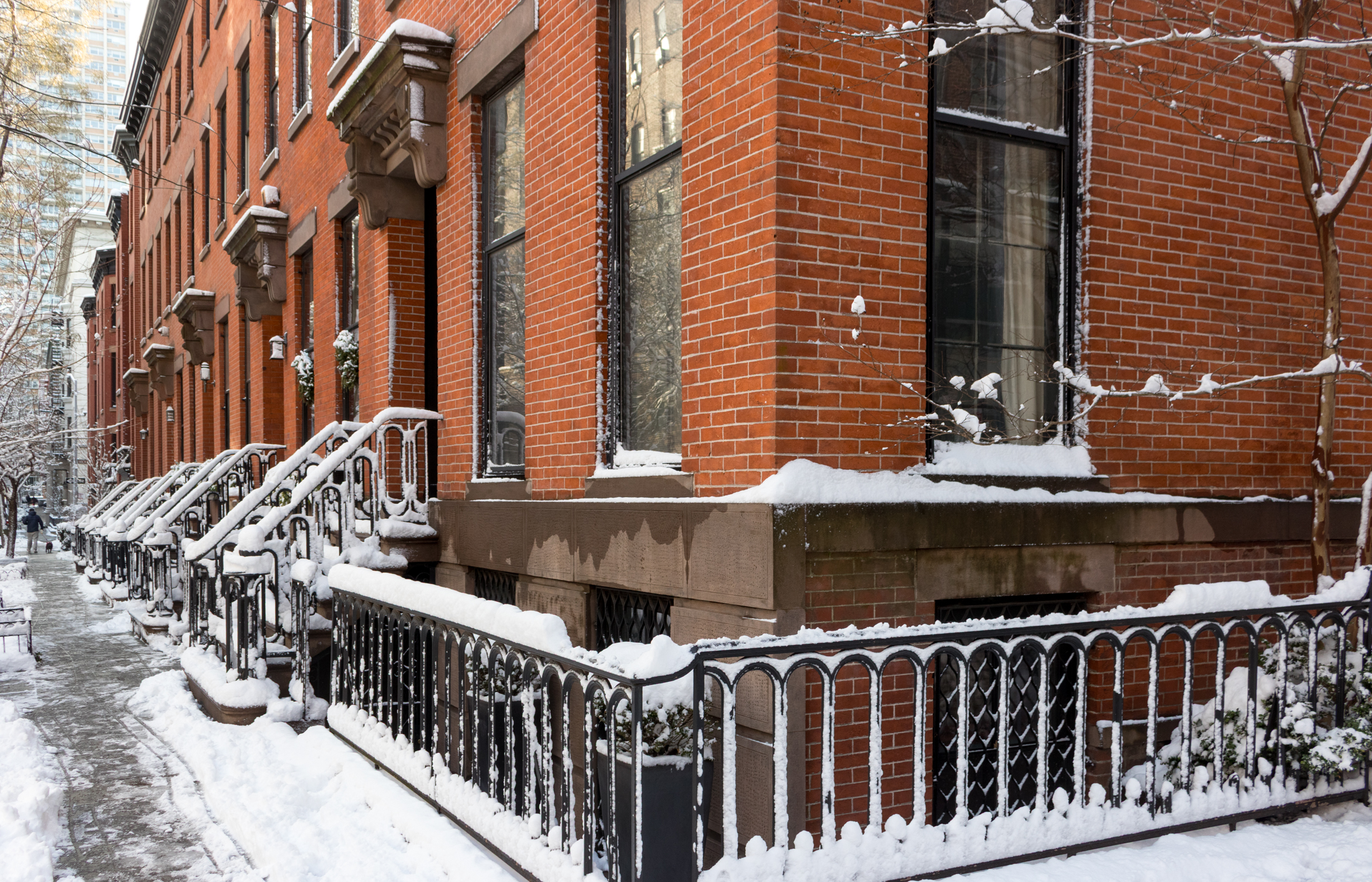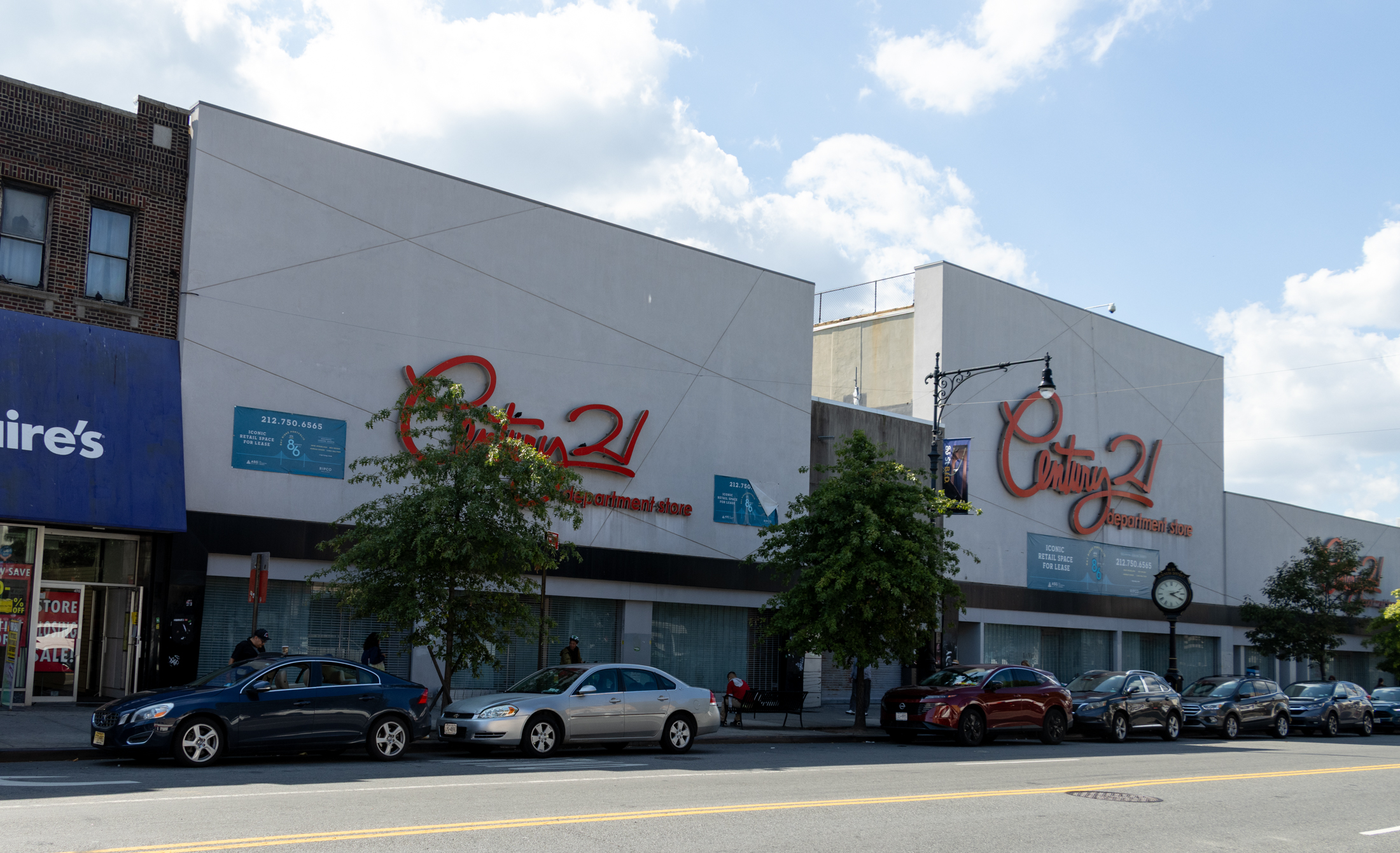Corcoran Market Report: We're OK, Actually
We got our hands on Corcoran’s Q2 sales data, and it shows that the state of the Brooklyn market isn’t quite as precarious as the Times made it out to be. The median price per square foot sales price of condos and co-ops is up 10 percent over this time last year, to $560,000, and…


We got our hands on Corcoran’s Q2 sales data, and it shows that the state of the Brooklyn market isn’t quite as precarious as the Times made it out to be. The median price per square foot sales price of condos and co-ops is up 10 percent over this time last year, to $560,000, and there was a 4 percent reduction in condo/co-op inventory. In terms of townhouses, while the median price on one-families was down 3 percent from Q2 ’07 levels, to $965,000, the median price on 2-4 families was up 6 percent, to $1,240,000. In fact, all the brownstone Brooklyn neighborhoods had pretty substantial price increases in the larger townhouse category, and inventory was extremely tight. The most startling figure in the report is the 15 percent decrease in median prices for Williamsburg condos, but even that doesn’t seem so horrible when you factor in that Corcoran had 47 percent more condo listings between April and June ’08 compared to the same three months in ’07. Another mediating factor to consider in viewing the drop in median price of Williamsburg condos: Many developers began skewing their mix of inventory towards studios and one-bedrooms since those were the units that were selling best; if there were more small apartments in the 2008 data, one would expect to see average and median prices declining. Conclusion: We don’t think the party’s over and done with in Brooklyn, either.
Manhattan ‘Still a Party’; Hangover for Williamsburg? [Brownstoner]





“If property declines 50% in Manhattan/NYC, the end of the world is near.”
Now *THAT’S* comedy gold!
Manhattan Second-Quarter Apartment Sales Fall by 22% (Update2)
2008-07-02 14:14 (New York)
(Adds Miller comment in seventh paragraph, Brooklyn prices
in 20th paragraph.)
By Sharon L. Lynch
July 2 (Bloomberg) — Manhattan apartment sales dropped the
most for a second quarter since 1998 and unsold inventory
approached an eight-year record, two signs prices may be poised
to fall in the nation’s most expensive urban housing market.
The number of sales declined 22 percent from a year earlier
and inventory rose 31 percent to 6,869 units, New York-based
real estate appraiser Miller Samuel Inc. and broker Prudential
Douglas Elliman Real Estate said in a report today. The median
price of a co-operative or condominium apartment increased
almost 15 percent to a record $1.03 million, lifted by new
developments.
Transactions are declining as financial firms have
announced plans to cut almost 90,000 jobs after taking more than
$400 billion in mortgage-related losses and writedowns. Those
companies may lose as many as 175,000 employees by next June,
according to executive recruiters such as New York’s Gerson
Group, casting a pall on a property market driven by Wall Street
compensation.
“People are asking: `Am I going to have a job?”’ said
Pamela Liebman, chief executive officer of the Corcoran Group, a
Manhattan-based real estate brokerage that also issued a price
report today. “There is a lot of uncertainty and uncertainty
puts people on the sidelines.”
Longer Selling Time
The U.S. housing slump started in mid-2005 when sales of
new and existing homes began to drop, bringing a five-year boom
to a close. Prices for existing homes started falling last July
and finished the year below 2006 levels, the first annual
decline since the Great Depression, according to the National
Association of Realtors in Chicago.
While prices in New York City are holding up for now,
buyers remain wary and apartments are taking longer to sell. The
average time spent on the market rose 15 percent to 135 days,
according to Miller Samuel. At the end of May, there were 7,320
housing units for sale in Manhattan, the second-highest number
for the month since Miller began keeping records in 2001.
“We’re really seeing a slowdown in activity,” Miller
Samuel President Jonathan Miller said. “It certainly marks some
sort of change or turning point.”
All four reports issued today show price increases.
Corcoran, owned by Apollo Management LP, and the New York-based
brokers Brown Harris Stevens and Halstead Property LLC, owned by
Terra Holdings LLC, produced reports in addition to Miller’s.
The figures vary in part because the brokers include some of
their own sales that have yet to show up in the city’s public
records database.
Condominiums Jump
Manhattan apartment prices rose 3.6 percent in 2007, the
smallest increase in 11 years, according to Miller Samuel.
About a third of second-quarter closings were new
condominiums, some of which went into contract before turmoil
hit the credit markets last August and September, said Gregory
Heym, chief economist for Terra Holdings.
Many of the units closing now are multimillion dollar
condominiums at the recently converted Plaza and at architect
Robert A.M. Stern’s 15 Central Park West.
Those properties helped drive the median condominium price
up almost 22 percent to $1.3 million in the three months ended
in June and contributed more than three percentage points to the
city’s overall increase in median price, according to Miller.
Without them, the median rose 11.2 percent, Miller said.
Future Bonuses
Goldman Sachs Group Inc. Chairman Lloyd Blankfein, former
Citigroup Inc. Chairman Sanford Weill and rock star Sting have
bought units at 15 Central Park West, where the apartments have
heated bathroom floors, Vermont marble countertops and six-
burner Thermador ranges.
Other buyers there include Nascar Inc. Chairman Brian
France, who paid $10.7 million, and Mitchell Julis, co-founder
of the asset management firm Canyon Partners LLC, who paid $10.2
million, according to city records.
Once the remaining units in Stern’s building and the Plaza
close, average prices may drop as much as $200,000, Heym said.
“I don’t expect to see any dramatic price change before
the end of the year,” Heym said. “The real telling thing will
be Wall Street bonuses and how the city looks going into 2009.”
Prices of two-bedroom apartments rose 18 percent to $1.65
million, the biggest increase for any size category. Studios
rose almost 12 percent to $480,000, one bedrooms increased 11
percent to $778,961, three bedrooms by 3 percent to $3.7 million
and apartments with four or more bedrooms climbed 11 percent to
a median of $7.35 million, Miller’s data show.
Neighborhood Sales
On Manhattan’s Upper East Side, home to exclusive co-op
buildings such as the one that inspired Michael Gross’s book
“740 Park: The Story of the World’s Richest Apartment
Building,” the median price climbed 22 percent to $1.07
million, according to Corcoran’s survey, compiled in partnership
with PropertyShark.com
West Side prices, boosted by sales at 15 Central Park West,
jumped 36 percent to $1.2 million. Downtown, the increase was 8
percent to a median of $1.05 million, Corcoran said.
In Brooklyn, the city’s most populous borough, the median
price rose 10 percent to $560,000 from a year earlier.
The top end of the Manhattan residential market remained
the strongest as wealthy buyers bought condominiums with
amenities such as gym and spa services, hotel-style room service
and swimming pools.
The median price of a luxury apartment rose almost 38
percent to $4.95 million in the Miller Samuel survey and 35
percent to $4.88 million, according to Corcoran. Both companies
consider apartments of more than $3.1 million as luxury.
“Real estate markets go up and down, and when it comes to
New York City, it’s an island. There’s not a lot of land, and
it’ll survive,” said Dottie Herman, chief executive officer of
Prudential Douglas Elliman. “I think we need to kiss the ground
because we live in New York.”
I’m predicting big price drops at the top of the market.
The secondary market for mortgages has collapsed, except for Fannie Mae insured stuff. Unless/until it recovers, banks that make jumbo mortgages need to hold on to them. That causes two problems: 1. they need enough regulatory capital to be allowed to make the loan, and most of them are short of capital already. 2. if prices go down the bank is in danger of losing its security.
So jumbos are going to be expensive and demand large downpayments. Most of the banks that were giving super-jumbos (over $1m) even a few months ago seem to have stopped.
I think this means that anyone who would have bought on salary is now out of the market above the Fannie Mae max. That eliminates the affluent professionals.
All that’s left, then, is cash buyers. Prices alone have gotten rid of most of them–there just aren’t that many people with $3m cash sitting around to start with. Wall St bonuses aren’t happening this year, so most of those folks are gone. The Europeans who’ve been paying cash are making less money at home as their own bubbles pop and have to worry about being caught in the next round of dollar depreciation. The tradeup game only works if there is someone who can buy at the beginning of the cycle, so that is going to slow.
So who is available to pay $3m for prime PS, FG and marginal CG? And even if there are some qualified buyers left, won’t most of them care enough about their money to wait for the coming discounts?
“People were literally burning down their property in the 70s and you think property values hadn’t fallen 50%”
And again with the absurd comparisons. NYC also saw over 2000 murders a year, was dealing with a HORRIFIC crack epidemic and no one was willing to invest a dime into this city.
You comparing NYC today to NYC of the 1970’s just shows that you are one of those old dudes who don’t seem to be able to move on from the past.
You might want to quit while you’re behind.
“I can say you are wrong in general for one simple reason – people don’t buy homes with “real” dollars.” This looks like English, but I can’t make any sense out of it.
If you want to compare prices peak to trough in a meaningful way, you have to adjust for inflation. “Real” dollars mean inflation- adjusted dollars. Operationally, the folks who publish these price runs — you can find some by googling Shiller — usually use the CPI or a similar deflator.
“Deflation rates in the 1930s were much more mild than people think (I believe it was about 10% from 1929 to 1939) but the results were catastrophic for debtors.”
Because their assets became worth less than their debt, right?
Sorry, just trying to look past the actual math to the logic of the conclusion.
Two random points:
One, when Harlem opened up to blacks weren’t real estate prices there more or as expensive as the stuff further south? (I think I remember reading that somewhere.)
And two, regarding the general state of the New York real estate market… is looking at something like Tokyo in the 90’s a valid comparison? Or am I talking out of my ass?
* * * * * * * * * * * * *
A lively conversation…
Ah…another day on Brownstoner!
* * * * * * * * * * * * *
signed, FGG
5:16
No you won’t, because you still don’t understand what the hell you are talking about. You still don’t understand that supply and demand in regards to residential real estate is not as simple as high demand equals high prices. It is based on a myriad number of factors, most particularly interest rates and household income.
Your limited understanding of economics simply can’t grasp the concept that residential real estate is not a commodity. Acquisition of residential real estate is entirely a function of income whether it is rented or mortgaged. Incomes may decline, and prices may decline, but that is only one factor in analyzing demand. During the Great Depression, well over 500,000 housing units were constructed in this city. Prices declined and incomes declined, but it was one of the city’s great building booms.
In the end – the finer details of value and the real estate bubble in general is really a secondary issue. What is important is maximal utility for the most number of people. As long as people have jobs they will be able to enjoy a higher standard of living via acquisition of modern housing.
If property declines 50% in Manhattan/NYC, the end of the world is near. That would create a trigger all over the world of utter chaos and mass hysteria.
And no, I’m not joking.
So people hoping for that, are real sickos.